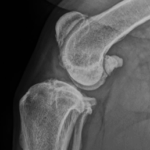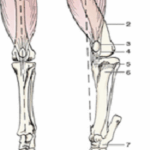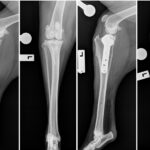Last week I posted a “what is this lump” post.
The answer: it is a mast cell tumour.
It couldn’t be accurately diagnosed by just looking at it or feeling it. It could only be diagnosed by taking a sample and examining it under the microscope.
The problem with trying to diagnose lumps based on feel or appearance alone is the fact that many will feel and look exactly the same, but have vastly different outlooks and treatment plans.
Let’s take mast cell tumours as an example. They can appear like a pimple, a lump under the skin, a flat plaque, a skin tag, or have many other appearances. All too often I have seen these misdiagnosed, with potentially fatal consequences.
So why is it so important to know what the lump is? Shouldn’t we just cut it out?
To answer this, we need to remind ourselves what the purpose of any cancer treatment is. To my mind, the job of the vet is to maximise the quality of a pet’s life. Our focus has to be on quality, not just quantity of life. I like to think of it as “adding life to a pet’s years, not just years to a pet’s life”.
To properly plan a treatment course, we need to be able to answer two questions:
- What is it?
- Where is it?
For some lumps and bumps, we find they are benign. This generally means that they don’t spread to other parts of the body and don’t invade surrounding tissues. In these cases, by achieving the correct diagnosis with simple testing such as fine needle aspirates, we know that surgery is not needed in most pets. This means the pet is saved from a potentially painful surgery because we had an accurate diagnosis and knew what it is (from the sample) and where it is (because we know it is benign we know it’s only where we can see or feel it).
For malignant (cancerous) lumps, which can spread and invade local tissue, it is even more important to answer these questions. By finding out what it is, we can properly plan any treatment and investigation.
Different cancers have different behaviours, so once we know what it is we know whether we need to look for spread to other parts of the body. This is important because we need to look at what we might achieve with surgery. If the tumour has already spread, removing the original tumour is unlikely to improve survival times, and may simply mean that the animals remaining time is spent recovering from a painful surgery.
By knowing what it is, we can also better plan any surgery to give us the best chance of a cure. If it is a benign lump (the “good” sort”) which needs removing because it is in a bad location or is so big that it’s causing a problem, we just need to remove the lump itself without needing to remove surrounding tissue. If it is malignant, we need to plan more carefully.
Malignant lumps tend to invade the surrounding tissues to varying degrees. The way I think of it is like a spider with very skinny legs. The body of the spider is what we can see or feel, while the legs spread out into the surrounding tissue. If we just cut out what we can feel, we leave the legs behind. These legs will then go on and produce a new, potentially more aggressive spider. If we don’t cut the whole spider out, we can actually make things worse.
Different tumours have different length “legs”, so by knowing what type of tumour it is we know how big the surgery needs to be. Some tumours may only need 2cm of surrounding tissue to be removed, while others need 5cm to be removed. Of course, the difficulty in achieving this varies depending on the animal and the tumour location. A lump on the side of a dog like a mastiff, which has lots of loose skin might be quite easy to remove, but the same lump on it’s leg (where we don’t have as much skin) might be very difficult. By knowing what we are dealing with, we can take out just the right amount of tissue to cure the dog while minimising the pain and complications which may come with surgery.
My steps for diagnosing and treating a lump:
While there is no set formula, we need to be able to answer the questions two to develop any treatment plan.
- What is it?: My first step will normally be a fine needle aspirate. I will normally examine the sample under the microscope to see if I can make a diagnosis. In some cases I will send the sample to a specialist pathologist if I’m unsure what cell types are present. In some cases, the pathologist may need a bigger sample to make an accurate diagnosis and I may take a bigger biopsy sample.
- Where is it?: Once I know what it is, I know where it may be. If it is benign, I know it is only where I can see or feel it, and I can make a decision as to whether it needs to be removed or of it can be safely left. If it’s malignant, I know if I have to look for it elsewhere in the body and where to look. This may include ultrasound, xrays or CT scans.
Once I can answer both these questions, I can make the best plan for the animal to give it the best possible outcome. Of course, there are other factors we always need to consider. We will also look at the pet’s age and general health before making final decisions. After all, there is no point in putting an elderly dog through a big surgery if they have multiple other health issues which means we won’t improve their overall quality of life.
Remember, our focus will always be on quality of life, and in most cases we can return the dog to a healthy, cancer-free state. But to do this, we need to make an accurate diagnosis, and make it early.
If your dog has a lump, please see call now to book an appointment.
Dr Braden Collins has completed courses in Oncology and Surgery through Sydney University. He is available for consultations at the Eaton Vet Clinic on Tuesdays, Wednesdays and Thursdays.



